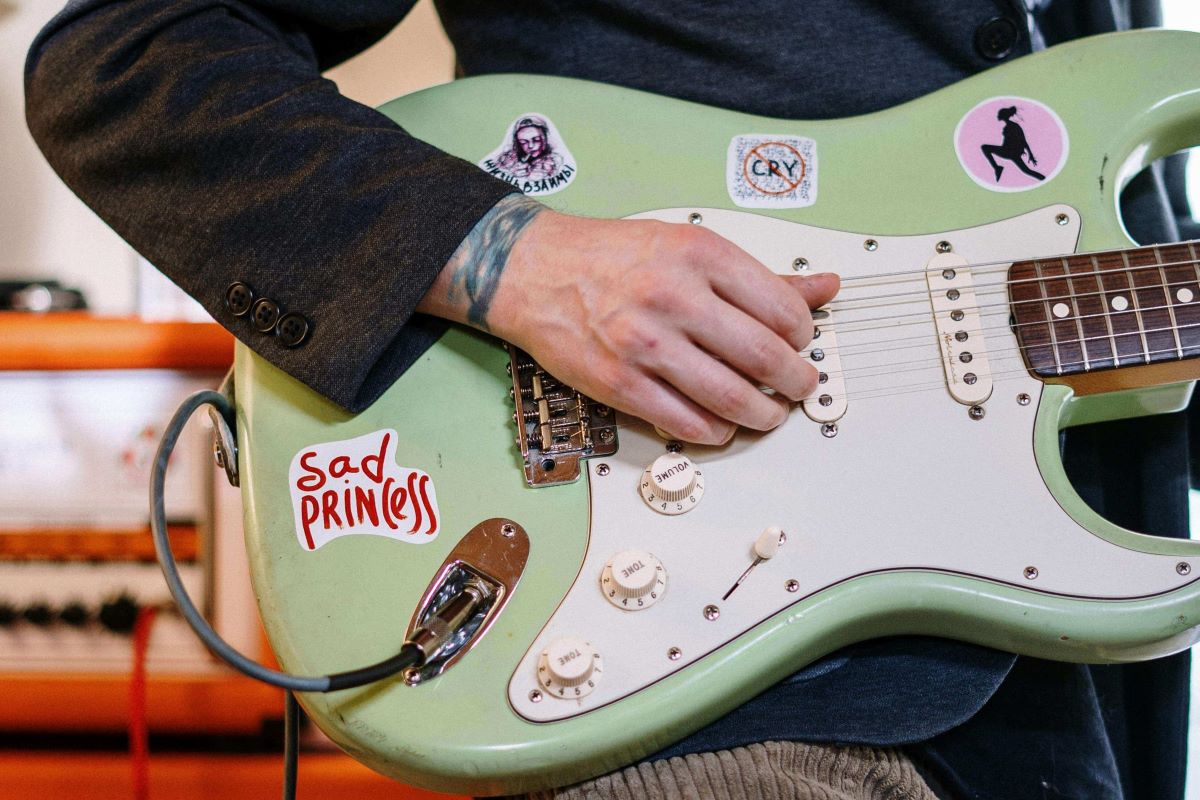If you haven’t mastered your minor 7th chords yet, you’re missing out on a world of rich, moody, and introspective sounds that will not only add a touch of melancholy to your playing but also make it sound a lot more sophisticated.
Minor Sevenths are creamy, jazzy, and soulful, with a little bit more tension than your standard root chords. The minor third gives them a sad feel, while the flattened 7th adds a slight dissonance, creating a softer sounding chord that works perfectly in genres such as jazz, blues, and funk. But there’s much more to them than that; you can use them in any number of other genres, such as alternative, rock, metal, and they even work great in pop songs.
So, let’s take one of my favorites, Am7, as an example and start with the basics…
What is an A Minor 7th Chord?
A minor 7th is a four-note chord that is built on a minor triad - the 1st, flattened 3rd, and 5th notes of a major scale - with the addition of the minor seventh interval. If you’re knowledge of music theory isn’t great, this probably sounds very complicated, but when you break it down, it’s far simpler than you think, so let’s do that.
A minor triad is the three notes that make up any minor chord, i.e., some of the first chords you ever played when learning the guitar. Even though you might be strumming up to six strings while playing one of these root chords, it only contains three different notes that are repeated, for example, A minor:
Note: When played correctly, an Am chord should have an A note as its root, therefore, you need to mute the low E string with either your thumb or the tip of your second finger. This makes it a five string chord. However, if you’re a beginner, don’t worry about this for now; strum all six strings and learn to mute this and all other chords that require muting as you improve.
As can be seen from the diagram, the chord consists of two A notes, two E notes, and a C note, i.e., three different notes, not five.
Let’s now take a look at the A major scale:
A - B - C# - D - E - F# - G# > Back to A
1 - 2 - 3 - 4 - 5 - 6 - 7 > 8
As we now know, a minor triad contains the 1st, flattened 3rd, and 5th degrees of the major scale; therefore, an A minor triad is made up of A (the 1st), C (the flattened 3rd, i.e., C# becomes C), and E (the 5th).
It’s now time to add the minor seventh note, i.e., the minor or flattened 7th, which would be G (a flattened G#) to create an Amin7 chord:
A - C - E - G
1 - b3 - 5 - b7
Minor 7th chords are usually abbreviated as ‘m7’, i.e., Am7, or sometimes as ‘min7’, i.e., Amin7.
You should now understand how any minor 7th chord is constructed, so let’s move on to…
Where can you play an Am7?
The root version of Am7 is one of the easiest chords to play because you only need to use two fingers. Start by playing a root Am chord, then lift your third finger off the fretboard and voila - you’re playing an Am7, as shown below…
As for the other places you can play an Amin7, this article would be a mile long if I listed them all. In fact, there are at least an astonishing 26 different ways of playing the chord on a standard guitar neck, which is far more than most other chords.
However, to get you started, I’ll go through what I think is the best way to learn these, or any other chords, the CAGED system. You can adapt these shapes and use them as a base to find the other positions. If you haven’t learned the CAGED chordal system yet, it’s well worth taking a look at…
But, we have a slight problem… Even though the CAGED system is one of the best tools for learning your chord shapes across the neck (as well as scales, modes, arpeggios, and anything else!), it does have some limitations, especially when it comes to minor chords. This is because there are no easily playable root versions of a C minor or G minor chord, which usually leads to minor chords being AED, as opposed to CAGED, as is the case with Am7.
We’d normally start with the C-shaped Am7 chord, but there isn’t one, so we’ll move on to the A-shaped Am7 chord, which is the one we’ve just covered in the root position…
Following the letters of the word CAGED, we would normally have the G-shaped Amin7, next, but again, there isn’t one, so we’ll move on to the E-shaped Am7…
And finally, the D-shaped Am7…
You’re probably now wondering… if there are only three CAGED versions of Am7, how on earth can there be at least 26 ways of playing it across the fretboard? Well, it’s because the construction of the chord allows for it to be played in many ways in the same position. If we take the E-shaped Am7 as an example, most people play it as…
But, it can also be played as…
Thankfully, that’s the end of the theory; you now know what notes make up the chord, and where it can be played up and down the neck.
So, let’s get into the groove, with our first song…
Ain’t No Sunshine - Bill Withers
Songs don’t come much better, much easier, or with more minor7ths, than this. We all strive to write great songs, but often overcomplicate them. However, this song is a masterclass in minimalistic songwriting.
The verse and intro is…
Am7 / Am7 / Em7 / G
Am7 / Am7 / Am7 / Am7
While the chorus, if you can call it that - the “Ain't no sunshine when she's gone, and she's always gone too long…” line is…
Em7 / Em7 / Em7 / Em7
Dm7 / Dm7 / Dm7 / Dm7
Then it’s back to the verse. If you want to include the gorgeous descending G string run, etc., then check out the full Ain't No Sunshine TAB.
Knocking on Heaven’s Door - Bob Dylan
There are two ways to introduce a new chord into your playing: one is by learning a new song, such as Ain't No Sunshine, or you can include it in songs you already know.
A lot of guitarists, even beginners, can already play Bob Dylan’s classic, in its most basic form, the chords are…
G / D / Am / Am
G / D / C / C
However, Bob Dylan and the majority of guitarists who have covered this song - which is nearly every guitarist that has ever lived - either substitute the Am for an Am7 or add it whenever they feel like it.
You can be structured if you like and play Am for the verses and Am7 for the choruses. Or better still, play it randomly, sometimes an Am, sometimes an Am7, or even play the first Am bar as an Am, then go to the Am7 for the second bar to add interest, or do it the other way around. The choice is yours.
This doesn’t only work for this song, try replacing an Am with an Am7 in other songs you know well. It might not sound great in all of them, but it will give some a cool new vibe, just by removing one finger from an Am chord.
Killing Me Softly with His Song - Roberta Flack
I’ll end with another legendary song, Killing Me Softly with His Song, by Roberta Flack. This is quite a bit more complex than the previous two songs I’ve covered, but it’s such a wonderful piece of music that I just had to include it.
The verse chords are…
Am7 / D7 / G7 / C7
Am7 / D7 / Em7 / Em7
Am7 / D7 / G7 / B7
While the intro and chorus are…
Em / Am7 / D7 / G7
Em7 / A7 / D / C7
G7 / C7 / Fmaj7 / Fmaj7
E / E
Am7 / D / Am7 / D
Am7 / D / Am7 / D
Check out the full Killing Me Softly TAB for more info.
Wrapping it Up
That’s it for my thoughts on how to play an Amin7th chord on guitar, and what songs you should be practicing to quickly master it.
As I’m sure you know, the key to becoming a great guitarist is practice - 20 minutes of focused practice playing things that you can’t already play, five days a week, is all you need to do. That’s just over the length of a movie, which is nothing over the course of a whole week.
So, what’s stopping you? Nothing, happy practicing and enjoy your Am7 chords!


Share:
Tremolo Systems: From Bigsby to Floyd Rose
5 Things I Wish I'd Known When Starting to Play Guitar